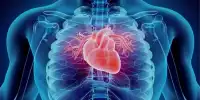Scientists have discovered an enzyme that is crucial to understanding why exercise improves our health. The discovery opens the door to the development of drugs that promote the activity of this enzyme, thereby protecting against the effects of aging on metabolic health.
High-quality studies have found a strong link between increased levels of physical activity, exercise participation, and improved health in older adults. Inactivity is responsible for approximately 3.2 million deaths worldwide each year. Chronic health conditions are on the rise in developed countries, where people are living longer lives, while physical activity is on the decline.
Scientists at Monash University have discovered an enzyme that is crucial to understanding why exercise improves our health. Importantly, this discovery has opened the door to the development of drugs that promote the activity of this enzyme, thereby protecting against the effects of aging on metabolic health, including type 2 diabetes.
Over the next three decades, the proportion of people over 60 will double globally, and by 2031, more than six million Australians will be over 65. Because the prevalence of type 2 diabetes rises with age, an aging population will result in an increase in the disease’s global prevalence.
Using drugs to activate the adaptive mechanisms orchestrated by NOX4 may improve key aspects of aging, such as the development of insulin resistance and type 2 diabetes. One of these compounds can be found naturally, for example, in cruciferous vegetables like broccoli or cauliflower, though the amount required for anti-aging effects may be more than many people are willing to consume.
Tony Tiganis
One of the main reasons for the increased prevalence of type 2 diabetes with age is the development of insulin resistance, or the body’s inability to respond to insulin, which is frequently caused by decreased physical activity as we age. The precise mechanisms by which physical inactivity promotes the development of insulin resistance, on the other hand, have remained a mystery.
Researchers from Australia’s Monash University have discovered how physical activity improves insulin responsiveness and thus promotes metabolic health. Importantly, the enzymes they discovered that are essential to this mechanism have the potential to be targeted by drugs to protect against age-related consequences such as muscle wasting and diabetes.

The Monash University Biomedicine Discovery Institute (BDI) team, led by Professor Tony Tiganis, discovered that reductions in skeletal muscle reactive oxygen species (ROS) generation during aging play an important role in the development of insulin resistance. According to Professor Tiganis, skeletal muscle produces ROS on a continuous basis, which increases during exercise.
“Exercise-induced ROS drives adaptive responses that are essential to exercise’s health-promoting effects,” he explained.
The researchers show how an enzyme called NOX-4 is required for exercise-induced ROS and the adaptive responses that drive metabolic health in a paper published in the journal Science Advances.
The researchers discovered that NOX4 is increased in skeletal muscle after exercise, which leads to increased ROS, which elicits adaptive responses that protect mice from the development of insulin resistance, which occurs with ageing or diet-induced obesity.
Increasing physical activity and exercise participation in older adults is a challenge for health professionals. Some success has been reported when physicians provided specific, detailed, and localized information to their patients, but more high-quality research is required to continue to address the issue of insufficient physical activity and exercise to ensure health benefits.
Importantly, the researchers discovered that NOX4 levels in skeletal muscle are directly related to the age-related decline in insulin sensitivity. “In this study, we demonstrated in animal models that skeletal muscle NOX 4 abundance decreases with age, leading to a reduction in insulin sensitivity,” Professor Tiganis explained.
“Using drugs to activate the adaptive mechanisms orchestrated by NOX4 may improve key aspects of aging, such as the development of insulin resistance and type 2 diabetes,” he said. “One of these compounds can be found naturally, for example, in cruciferous vegetables like broccoli or cauliflower, though the amount required for anti-aging effects may be more than many people are willing to consume.”
















